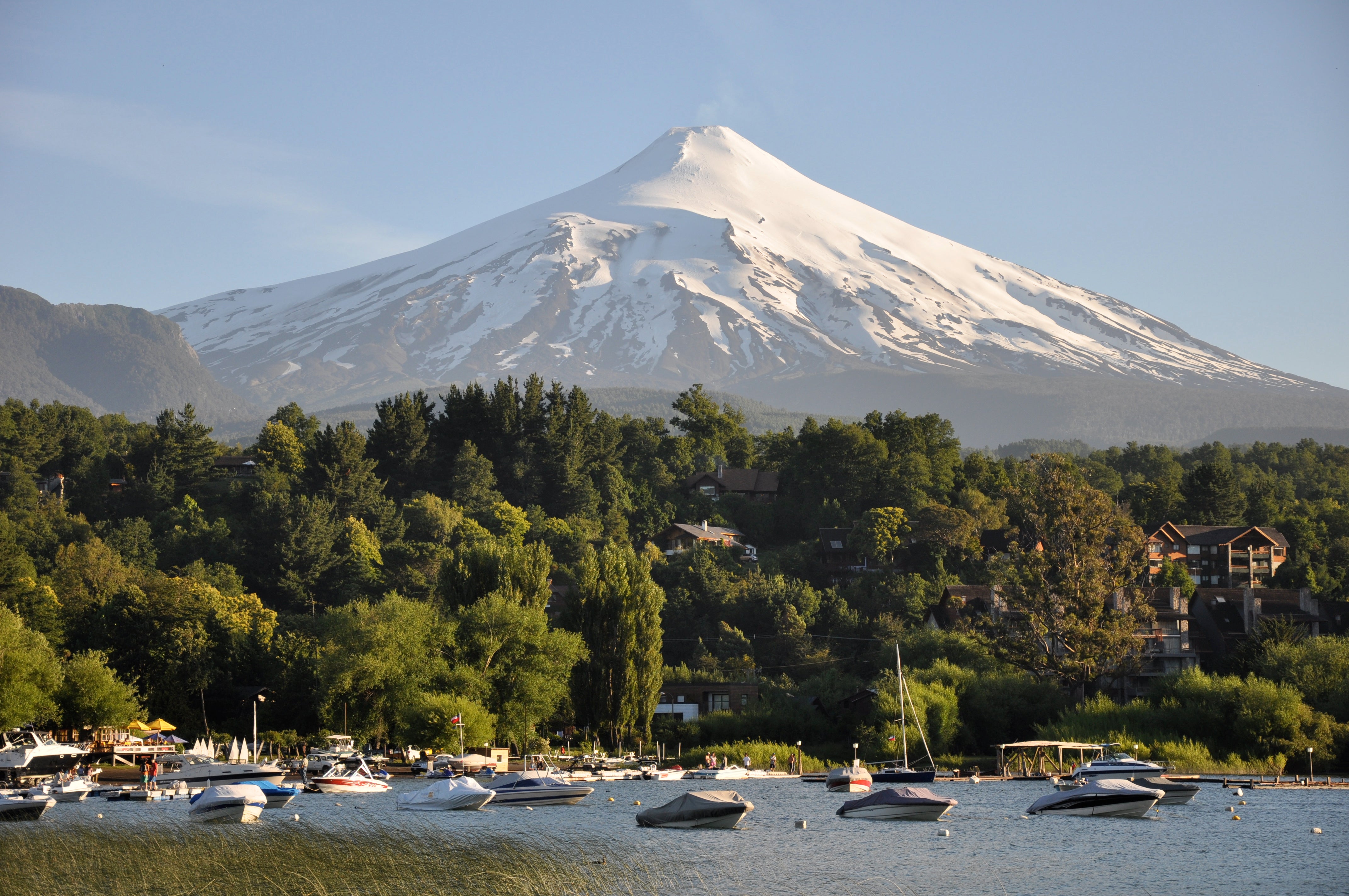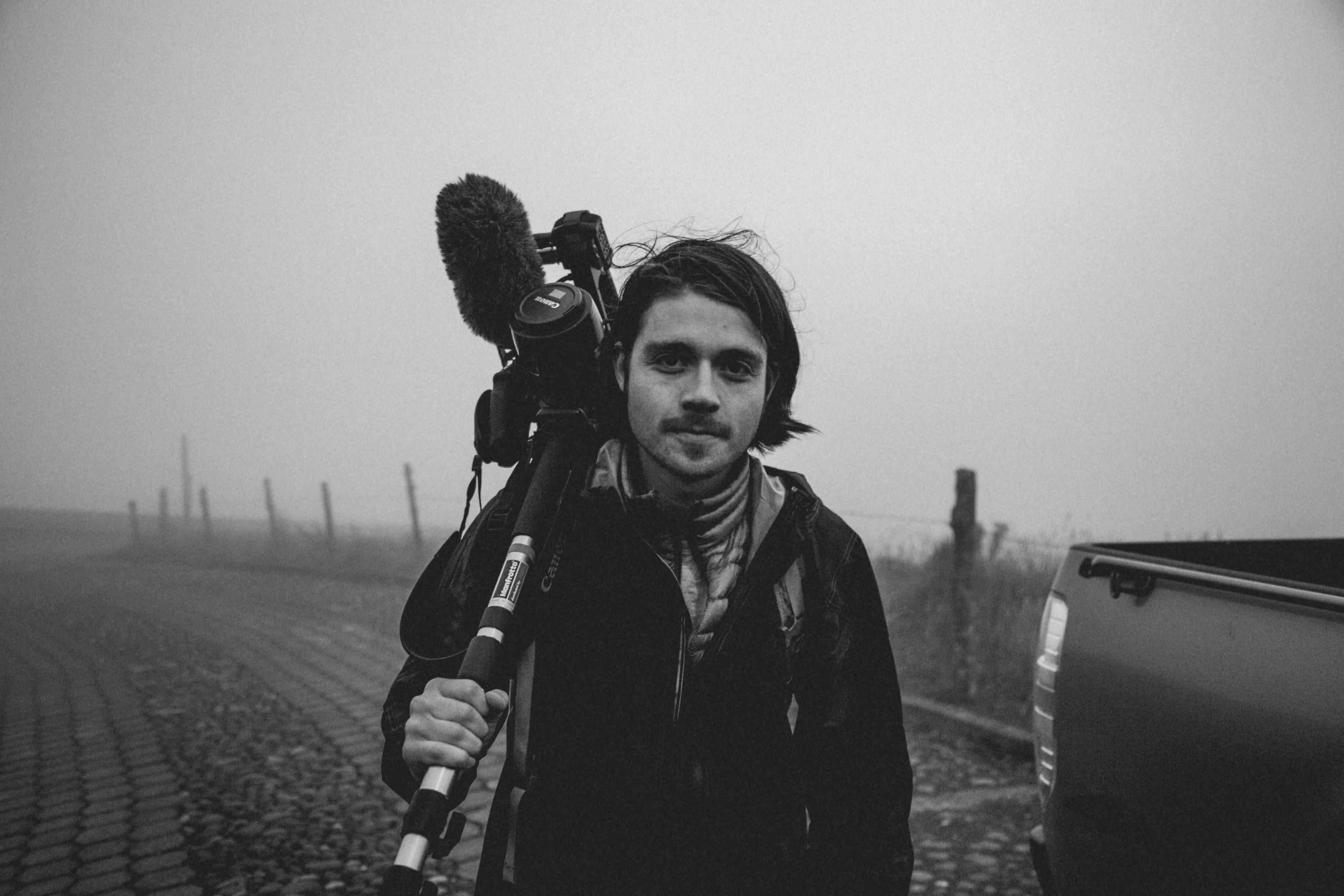
Volcan Villarrica in Chile where Johnson and Voss have previously collaborated on a science film project.
A $50,000 grant from the National Geographic Society will help Jeffrey Johnson, an associate professor in the Department of Geosciences, and Zach Voss, a filmmaker and Boise State alumnus, tell the story of volcano research.
Beginning this fall, Johnson, Voss and Boise State students will travel to active volcanoes around the world to film Boise State researchers and their international partners at work. Filming will begin in September at Stromboli, a volcano off the coast of Sicily that’s been erupting since the 1930s. It will continue next year in Latin America. Editing will take place later on campus with assistance from Rulon Wood, an assistant professor in the Department of Communication who teaches filmmaking. The project will represent an interdisciplinary dovetailing of science and art.

Jeffrey Johnson on location in Ecuador in 2016. Matthew Wordell photo.
“As a scientist my desire is to communicate to the public about what volcano science is, and what we do,” said Johnson. His specialties include eruption dynamics and the use of infrasound to monitor volcanoes. He and Voss share a common goal of telling the story of volcano researchers without “dumbing down” the science —a common trend in STEM, or science, technology, engineering or math-based documentaries.
“I see this as an opportunity to show off how fascinating STEM is, and in particular, STEM applied to geosciences,” Johnson said. “Volcanology is basically geology that happens on a human time scale.”
Collaborating with Wood and his students to edit the volcano footage will further another of Johnson’s goals. “Teaching science students how to communicate, and teaching art students how to talk about science. That’s what we want to do in a well-rounded liberal arts environment,” he said.

Zach Voss on location in Ecuador in 2016. Matthew Wordell photo.
Wood, too, is looking forward to the collaboration.
“It will be cool for our students who normally focus on narrative to be working on a documentary. They will see how they can use their skills to promote science and get experiences in adventure filmmaking,” Wood said.
He’s eager for students to learn that working in film goes way beyond working in Hollywood. “It’s also doing web stuff, and science stuff, and making a living,” said Wood.
Voss will return to campus to act as a mentor for students through the editing process. Learning from Voss, a working film professional who studied at Boise State, will be invaluable for students, said Wood.
Johnson and Voss anticipate producing three or more short programs from the footage they shoot. They hope to show their work through National Geographic and at film festivals. Johnson and Voss have worked together before, making documentaries about volcanos in Guatemala, Ecuador, and Chile. The organization featured Voss’ 2016 film, “Santiaguito: The Volcano Laboratory,” about a Guatemalan volcano, in its Short Film Showcase.
BY: ANNA WEBB PUBLISHED 6:53 AM / AUGUST 8, 2018